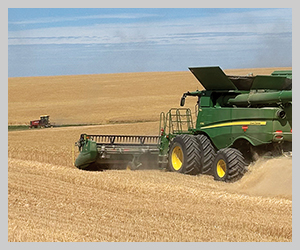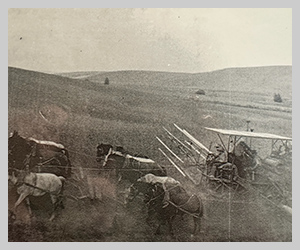
Technology has moved plant breeding forward by leaps and bounds, but not without some resistance, most notably to genetically modified organisms (GMO)s. Gene editing could provide a viable alternative in breeding programs without all the GMO baggage.
In gene editing, researchers modify the current DNA of a plant to either stop a gene from producing something or to start producing something. GMOs, on the other hand, get to the desired outcome by introducing foreign DNA into the plant. GMOs are tightly regulated, and many countries require labeling of GMO products or ban them altogether. Because gene editing doesn’t use foreign DNA, the regulatory burden may be less stringent, with some countries being more willing to accept them. In the U.S., the Food and Drug Administration (FDA) generally only requires regulation for plants with more than two modifications done through gene editing.
While gene editing existed as far back as the 1980s, the development of the CRISPR-Cas9 system in 2009 revolutionized the technology by making gene editing simpler, faster, and more accurate. With CRISPR-Cas9, the CRISPR part of the technology guides researchers to the right part of the gene’s DNA, and the Cas9 enzyme cuts one strand of the DNA at that precise spot. The cell then naturally repairs the cut.
Once the gene modification is made, the plant reproduces, giving half of its DNA to the second generation. Researchers then screen the plants, looking for the CRISPR-Cas9 enzyme. Plants with the enzyme are discarded; the other plants contain the naturally repaired DNA.
“If you looked at that from the gene sequence, you would have no idea, because you would just see DNA that a plant made,” explained Arron Carter, the Washington State University winter wheat breeder. “Most of the time, we’re causing a gene not to work because it’s very easy to go in, make a mutation in there, and now that gene doesn’t make the enzyme. It’s a little more difficult to put something in that will do something that a plant typically doesn’t do. It’s not that it’s impossible. It’s just more difficult.”
For breeders, the biggest advantage to gene editing is the time it takes to produce plants with the desired trait. Through traditional breeding, Carter might find a desired trait in a hard red spring variety. He would have to cross it with his best soft white winter line and then try to get the new variety to work as a Washington soft white winter line again.
“If we use gene editing, I could take my best soft white winter line, modify that gene, and now we have whatever variety that we already know is excellent for Washington with that one adjustment,” he explained.
However, Carter currently doesn’t use gene editing — or GMOs, for that matter — in his breeding program. Not only does gene editing require specialized equipment and training, but the technology is still working through regulatory hurdles and acceptance by most of Washington wheat’s export markets. If the technology becomes widely accepted, Carter would most likely send the material to a specialized lab that would make the gene edit for him and send the plant back.
It’s not only customer acceptance holding Carter back, but also the regulatory side. The wheat genome is much more complex than corn and soybeans and is still being mapped. It has three copies of every gene, meaning that at a minimum, an edit would have to be made three times. That puts gene editing in wheat over the FDA’s regulatory limit of two gene edits.
“In wheat, we are still trying to understand a lot about its genetics. We can only make a gene edit if we know, if we understand how the gene works. The technology is there, but our full understanding of the wheat genome, of what all the genes do, what their sequence is, is not there yet,” he said.
Besides the complexity of the genome, wheat is one of the last big crops to be privatized, so the industry hasn’t seen the big private investments that other crops have.
Carter said there are traits that would be helpful to have in his breeding program that could easily be done through gene editing. One of those is the polyphenol oxidase gene, often abbreviated to PPO, that causes browning in fruits and vegetables — think of the browning that happens to an apple after it is cut open. In wheat, turning off that gene would help keep noodles from oxidizing and turning gray.
“If we remove that enzyme, you would have nice, bright, beautiful noodles,” he said.
Another helpful trait for growers that could be addressed with gene editing is herbicide resistance. Breeders could deactivate the enzyme that an herbicide molecule would typically bind to. The enzyme keeps functioning, but the location where the herbicide binds is now inactive.
“(Those are two traits) that would be pretty easy targets and would be beneficial to our growers and our end markets,” Carter said.

















